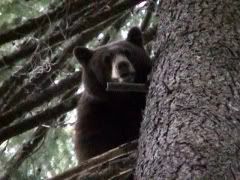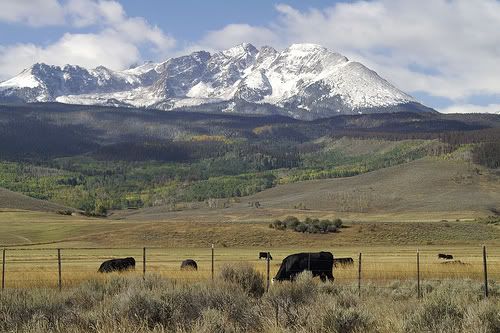Hunting Mule Deer in Utah

The state of Utah is located in the heart of the best Mule Deer habitat on earth. Additionally, a high percentage of Utah land is public. Nevertheless, Utah may have the worst mule deer management of any state that has mule deer. Utah is one state that has capped the number of mule deer at a number substantially below carrying capacity. The DWR refers to this limitation as the “political carrying capacity”. Winter depredation claims against the DWR in the late 80’s and early 90’s were a major factor in the agency placing a ceiling on mule deer numbers.
Around 1990, the state of Utah was split into regions and the regions were split into units. At that time, Utah also implemented a lottery for obtaining deer tags. Mule deer tags, which had previously been unlimited and over-the-counter, were, and are now sold via this lottery. At the same time, the number of hunters was cut by half and a cap on the number of hunters was set at 97,000. No more than 10% of the tags for a region/unit can be awarded to non-residents. In spite of this fact, odds of a non-resident drawing a tag are, in some cases, better than for a resident.
The Utah drawing process begins in January each year, so pay attention. Utah is divided into 5 regions and 80, or so, units. The Division of Wildlife Resources (DWR) allocates tags in such a way as to distribute the greatest number of hunters where there are the least number of mule deer. That’s handy.
Even though there are a few whitetail in the Northern part of Utah, there are no tags specifically for whitetail. I suppose you could kill a whitetail on a mule deer tag, if you chose to, and if you could find one.
 In the last 25 years, Utah’s elk herd has mushroomed. This phenomenon has coincided with the decline of mule deer populations, hence, there are numerous persons and groups trying to determine if there is a relationship between increasing elk and decreasing mule deer. Thirty years ago, Utah’s few elk were primarily in the North. Today, Northern Utah possibly has the least elk in the state. Overall, the elk population has increased more than 10-fold.
In the last 25 years, Utah’s elk herd has mushroomed. This phenomenon has coincided with the decline of mule deer populations, hence, there are numerous persons and groups trying to determine if there is a relationship between increasing elk and decreasing mule deer. Thirty years ago, Utah’s few elk were primarily in the North. Today, Northern Utah possibly has the least elk in the state. Overall, the elk population has increased more than 10-fold.
It is widely believed that elk have provided an alternate prey base for mountain lions and  black bears, allowing predator numbers to stay at maximum while mule deer numbers remain perpetually dismal. A Utah Forest Ranger told me that, in the three year period, preceding 2003, there had been 89 black bears released between the Idaho border and the Monte Cristo highway (Rich, Cache, and Weber counties), most of which were troublesome bears removed from Yellowstone.
black bears, allowing predator numbers to stay at maximum while mule deer numbers remain perpetually dismal. A Utah Forest Ranger told me that, in the three year period, preceding 2003, there had been 89 black bears released between the Idaho border and the Monte Cristo highway (Rich, Cache, and Weber counties), most of which were troublesome bears removed from Yellowstone.
According to my calculations, the Utah mountain lion herd reached it’s maximum carrying capacity around 1990 and has been sustained at that level since then. Annual lion harvest is not allowed to exceed annual recruitment. It is believed that elk have played a key role in allowing mountain lions to be sustained at artificially high numbers while deer numbers are suppressed.
 In the last twenty years, there has been a serious decline in ranching and farming in Northern Utah. This has negatively impacted mule deer both in reduced predator control and in reduced grazing which means less quality deer browse. Forest management has never been worse in terms of sustaining or creating habitat for mule deer. Forest Service personnel seem to be interested in only one type of forest – climax forest, which is not good for wildlife and which maintains a tinder box for fire. In the last two decades, southern Utah has had more favorable conditions for mule deer than Northern Utah. Moreover, Southern Utah has fewer hunters. Most of Southern Utah has remained rural. Ranching is still fairly common in Southern Utah, and predator control is still important to ranchers. There is also virtually unlimited winter habitat for most Southern Utah deer.
In the last twenty years, there has been a serious decline in ranching and farming in Northern Utah. This has negatively impacted mule deer both in reduced predator control and in reduced grazing which means less quality deer browse. Forest management has never been worse in terms of sustaining or creating habitat for mule deer. Forest Service personnel seem to be interested in only one type of forest – climax forest, which is not good for wildlife and which maintains a tinder box for fire. In the last two decades, southern Utah has had more favorable conditions for mule deer than Northern Utah. Moreover, Southern Utah has fewer hunters. Most of Southern Utah has remained rural. Ranching is still fairly common in Southern Utah, and predator control is still important to ranchers. There is also virtually unlimited winter habitat for most Southern Utah deer.
In Utah, at this time, you don’t need to worry about units unless you apply for a premium limited-entry or limited-entry unit. Otherwise, you will be applying for a region instead of a unit. The number of hunters is limited in all cases, but in the limited-entry and premium limited-entry units, the amount of real estate you can access is much more restricted than it is for a region. Premium limited-entry means there will be fewer hunters, not more deer. Limited-entry may also have few hunters, but is rated as having fewer mature bucks.
Since the inception of the lottery, the Southern region has been the most popular region, with more hunters applying for that region than the number of permits available. The Southern region also has the fewest tags available of the five regions. Some of the other regions, most notably, the Northern region, have sometimes had fewer applicants than available tags. The left-over tags are sold first-come. If you really want a tag, and missed the drawing, this is one way to get one. There have been numerous years when the Northern region did not sell out. The DWR has resorted to peddling these unwanted tags by forecasting high numbers of pre-season bucks and high success rates which is typically a pure fabrication. Don’t rely on these forecasts unless you want to have your hopes dashed.
Experienced hunters are now applying only for the premium limited-entry units and if they do not draw, they do not hunt. The premium limited-entry units are a far cry from the quality they once had, but their quality is higher than the rest, mostly because of the small number of hunters. Unfortunately, some of the tag quantities are now so low that non-residents cannot even apply. Odds of drawing a premium limited-entry tag are low, and now you must by a license before even applying for a bonus point. One problem with the bonus point scenario is that you wait years to draw, and by the time you draw things have changed, so pay attention.

utah has the best deer hunting i have ever seen in my life.